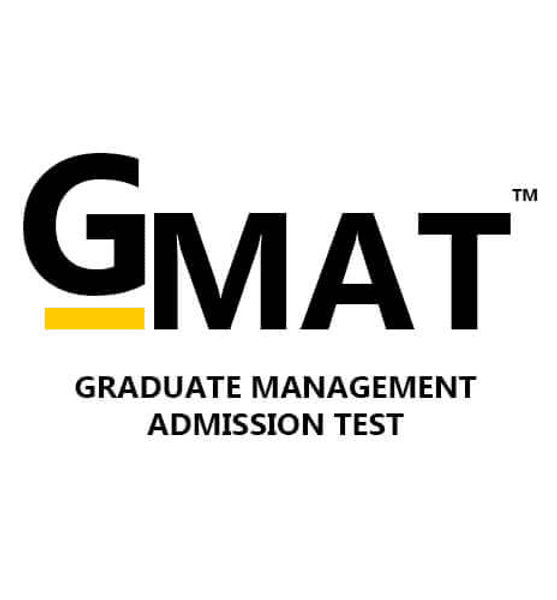
Top 10 Exams to Study Abroad: IELTS, TOEFL, GRE, and More!
Studying abroad offers many opportunities, but it has challenges too. First, you must clear the required exams. You must meet the academic and language requirements of international universities. There are about 10 exams to study abroad. These exams apply whether you seek an undergraduate, postgraduate, or professional degree. These requirements often include clearing specific entrance tests or language proficiency exams.
Let’s dive into the top 10 exams to study abroad and understand their purpose, structure, and where they are accepted.
Language Exams to Study Abroad
Language proficiency is essential when studying in an English-speaking country. Universities assess your ability to read, write, listen, and speak English through various exams to study abroad for non-native speakers.
IELTS
The International English Language Testing System (IELTS) is one of the most popular exams for foreign studies. It is widely accepted in countries like the UK, USA, Canada, Australia, and New Zealand.

The IELTS test is overseen by the British Council, IDP, and Cambridge Assessment English. It is used by over 9,000 institutions, like universities and employers, to assess English skills.
There are two options for the IELTS exam: Academic and General Training. The Academic test is for those seeking education or professional qualifications. The General Training test is often needed for immigration to Australia, Canada, and the UK. It is also required for secondary education, vocational training and gaining work experience, in English-speaking environments.
Structure:
The test has four sections:
- Listening (30 minutes)
- Reading (60 minutes)
- Writing (60 minutes)
- Speaking (11–14 minutes)
Scoring: The IELTS is scored on a 9-band scale, with most universities requiring a score of 6.5 or higher. A high score on the IELTS can boost your chances of getting a scholarship to study abroad after 12th grade. If you plan to apply for scholarships, it’s important to pass the IELTS. Hence, it’s one of the crucial exams to study abroad.
Also Read: How To Prepare for IELTS?
TOEFL
The Test of English as a Foreign Language (TOEFL) is another widely accepted test for admission in foreign universities. It is especially popular among US, Canada, Australia and UK universities.

The TOEFL iBT (Test of English as a Foreign Language Internet-Based Test) is the most widely used TOEFL test for assessing English proficiency. It has four sections. They test skills for effective communication in English-speaking environments.
Test takers will get their scores within four days. They can retake the test an unlimited number of times. However, there must be a 12-day gap between attempts. This is to help them improve their scores. Many schools and universities now use the iBT to test students’ academic English. This is vital for non-native speakers who want to study in English-speaking countries.
Structure:
The test includes four sections:
- Reading (54–72 minutes)
- Listening (41–57 minutes)
- Speaking (17 minutes)
- Writing (50 minutes)
Scoring: Scores range from 0 to 120, and a score of 90+ is often required for top universities. Its universal acceptance makes TOEFL one of the key exams to study abroad.
Also Read: TOEFL vs. IELTS – Which is Easier?
PTE
The Pearson Test of English (PTE) is gaining popularity due to its quick results and acceptance in countries like Australia and the UK. The test measures how well non-English speakers can join English-taught university programs.

It’s widely used by schools to assess academic English skills. It is crucial for non-native speakers who want to study at universities in English-speaking countries. The fast turnaround time and ease of scheduling make PTE a preferred choice among exams to study abroad.
Structure:
PTE is divided into three sections:
- Speaking and Writing (54–67 minutes)
- Reading (29–30 minutes)
- Listening (30–43 minutes)
Scoring: Scores range from 10 to 90, with a score above 65 considered competitive.
Also Read: PTE Score Chart 2024
Duolingo
If you’re looking for a cost-effective and convenient language test, the Duolingo English Test is a great option. Duolingo has emerged as a viable option among exams to study abroad. Many universities worldwide, including those in the USA and Canada, accept it.

When you are in a rush to take a test and want results Duolingo is a good option for getting your results within 2 days. The test is recognised by over 4,500 institutions worldwide. It evaluates your English in practical scenarios.
Structure:
The test includes:
- Adaptive testing for reading, writing, speaking, and listening skills
- A video interview and writing sample
Scoring: Scores range from 10 to 160, with most universities requiring at least 105.
Also Read: Which Test Is Better – IELTS, TOEFL, PTE or Duolingo?
Standardised Entrance Exams to Study Abroad
Apart from language proficiency, you may also need to clear certain standardised entrance exams depending on your chosen course and country.
SAT
The Scholastic Assessment Test (SAT) is one of the most common exams to study abroad after 12th. It is administered by the College Board. The fee for this test is $60.
The Math section has parts where you can use a calculator and parts where you can’t. There’s also an Essay section that some colleges might require. You must assess a given argument in essay form. Many students see the SAT as a college admission test. Many US and global colleges and universities recognise it.

Structure:
The SAT has two sections:
- Evidence-Based Reading and Writing
- Mathematics
Scoring: The test is scored on a scale of 400–1600. A score above 1300 is considered competitive for top universities.
Before you start preparing, review the SAT exam syllabus to know what each section covers.
If you’re unsure whether you can apply, here’s everything you need to know about SAT exam eligibility.
ACT
The American College Testing (ACT) is another popular entrance exam to study abroad for undergraduate courses. Like the SAT, it is widely accepted in the USA and Canada. Established in 1959 by ACT Inc., the ACT is now a recognised college entrance exam, like the SAT, worldwide. Many students choose ACT as one of their preferred exams to study abroad.

Each year, over a million students take the ACT exam. This shows its importance in college admissions. The ACT test lasts 3 hours and 35 minutes, including a 40-minute essay. Without the essay, it lasts about 2 hours and 55 minutes. The test fee is $206.50.
Structure:
The ACT includes:
- English
- Mathematics
- Reading
- Science
- Optional Writing Section
Scoring: The test is scored on a scale of 1–36, with competitive universities requiring a score above 28.
LSAT
The Law School Admission Test (LSAT) is designed for students planning to pursue law degrees abroad, especially in the USA and Canada. LSAT stands out as one of the niche exams to study abroad.

The LSAT test lasts about three and a half hours in India. You can take this assessment up to three times a year. You may attempt it a maximum of seven times in your lifetime to get your best score. The application fee costs about $222.
Structure:
The LSAT has four sections:
- Logical Reasoning (2 sections)
- Analytical Reasoning
- Reading Comprehension
- Unscored Writing Sample
Scoring: Scores range from 120 to 180. Top law schools often require scores above 160.
GRE
The Graduate Record Examination (GRE) is one of the most prominent exams to study abroad for higher education. It is a widely accepted entrance exam for MS in abroad programs, especially in the USA, Canada, and Europe.

The GRE aims to provide scores to many graduate programs. It tests skills, developed over time, that are key to success in various fields. The overall test time is around 1 hour and 58 minutes. The test fees is $220.
Structure:
The test includes:
- Analytical Writing
- Verbal Reasoning
- Quantitative Reasoning
Scoring: The GRE is scored on a scale of 260–340. A score above 320 is considered excellent for top-tier universities.
GMAT
The Graduate Management Admission Test (GMAT) is essential for students applying to business schools worldwide. As a globally recognised test, GMAT holds a prime position among exams to study abroad. A high score can boost your chances for top business schools and scholarships. The GMAT exam now lasts 2 hours and 15 minutes. Its format has changed to reflect the skills needed in today’s business world.

Results usually come out in 3 to 5 days after taking the GMAT test. It gives a detailed breakdown of your performance. This helps students and schools gauge their readiness for graduate management studies. The GMAT test costs about $275 on average. This amount can vary by where you take the test. You can retake the exam every 16 days, up to five times in a year.
Structure:
The GMAT includes:
- Analytical Writing Assessment
- Integrated Reasoning
- Quantitative Reasoning
- Verbal Reasoning
Scoring: The test is scored on a scale of 200–800, with competitive programs requiring a score above 700.
MCAT
The Medical College Admission Test (MCAT) is designed for students aspiring to study medicine in countries like the USA, Canada, and Australia. For medical aspirants, MCAT is one of the must-take exams to study abroad. The MCAT test lasts for a total of 7 and a half hours. It can be taken at different times throughout the year in locations, around the world.

In India, there are no MCAT test centers. So, test takers must go to places like Singapore, Israel, or Qatar to take the test. It costs around $330 to take the test.
Structure:
The MCAT includes:
- Biological and Biochemical Foundations of Living Systems
- Chemical and Physical Foundations of Biological Systems
- Psychological, Social, and Biological Foundations of Behavior
- Critical Analysis and Reasoning Skills
Scoring: Scores range from 472 to 528, with most medical schools requiring a score above 510.
Final Thoughts
Preparing for exams to study abroad requires dedication and strategic planning. The type of test you need to take depends on your course, university, and country. For undergrad programs, the SAT and ACT are essential. Postgrad programs often require the GRE or GMAT. Don’t forget to check the specific language proficiency tests like IELTS or TOEFL that are accepted by your target universities. With the right preparation, you can achieve your dream of studying abroad!
Exams to Study Abroad FAQs
Q1. What exams are required to study abroad?
A1. You may need to take language proficiency tests like IELTS, TOEFL, or Duolingo and standardised exams like SAT, GRE, or GMAT, depending on your course and university.
Q2. Q2. Are there scholarship exams after 12th to study abroad?
A2. Yes, exams like SAT and IELTS can increase your chances of earning scholarships. Some universities also offer merit-based scholarships based on your entrance test scores.
Q3. Q3. Is there an entrance exam for MS in abroad?
A3. Yes, the masters entrance exam in India and globally recognised tests like GRE and GMAT are required for MS programs abroad.
Q4. Can I study abroad without taking these exams?
A4. Some universities offer conditional admissions or accept alternative qualifications, but most top universities require these tests.
Q5. Can I study in the UK without IELTS?
A5. Yes, you can study in the UK without IELTS. There are some universities that accept TOEFL and Duolingo scores instead of IELTS.

